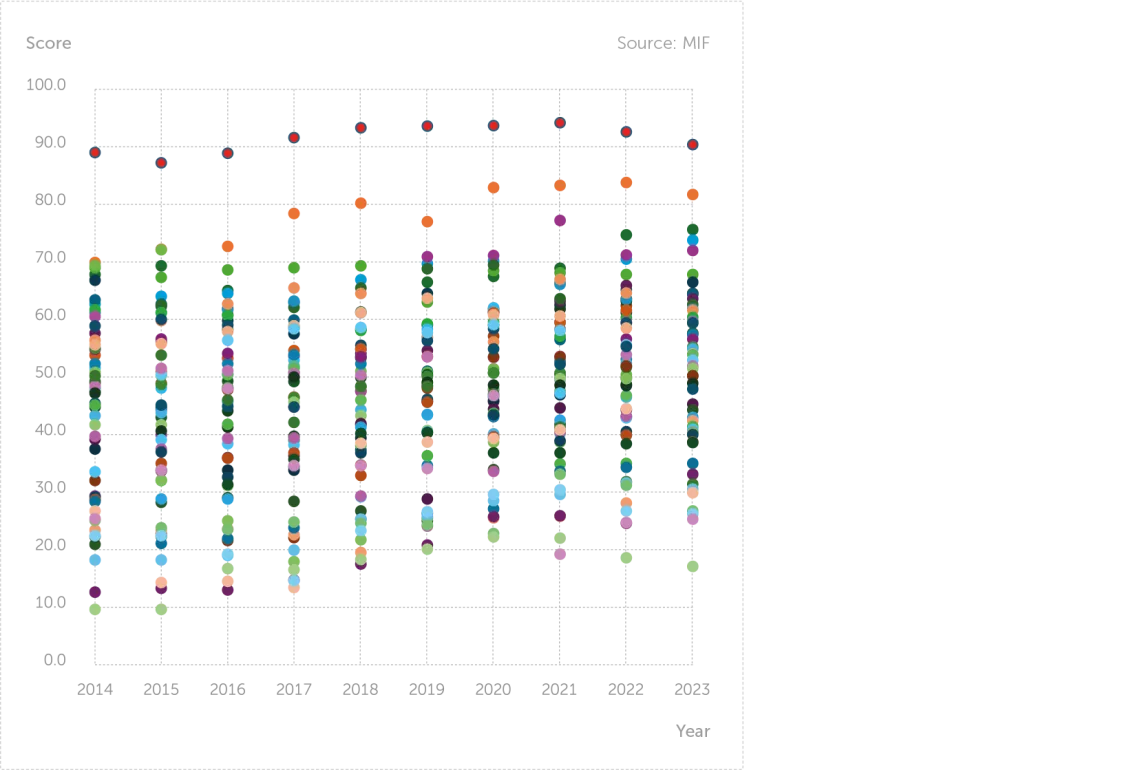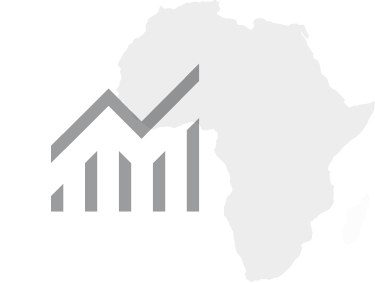Women's Equality: 2024 IIAG overview
07 March, 2025
International Women's Day (IWD) on 8 March is a global day recognising the social, economic, cultural, and political achievements of women. It is also a key moment to call for and raise awareness of the need for women's equality and gender parity.
The 2025 United Nations theme is 'For ALL women and girls: Rights. Equality. Empowerment.' Calling for action that can unlock equal rights, power and opportunities for all women. 2025 also marks 30 years since the Beijing Declaration and Platform for Action. The 2025 Beijing +30 Africa Regional Review shows that progress towards gender equality remains generally uneven across countries on the continent.
In line with this, it is key to have a data assessment of Africa’s progress towards achieving Women’s Equality over the last decade. This overview unpacks results from the Women’s Equality sub-category in the Ibrahim Index of African Governance (IIAG), delving into the underlying indicator trends and country analysis
Women’s Equality: the second most improved subcategory in the IIAG
For 94.8% of Africa’s population, living in 47 countries, Women’s Equality has improved since 2014 – with 60% living in 23 countries where it has even increasingly improved since 2019.
Africa: Women's Equality 10-year change (2014-2023)
Africa makes significant strides in legal rights and protection for women
Laws on Violence against Women improved all across the continent. It was the most improved indicator in the sub-category and the second most improved within the entire IIAG, improving by +16.7. This shows countries’ renewed commitment to protecting the rights of girls and women.
On the other hand, the Rights & Civil Liberties for Women indicator only improved marginally by +1.9 at an increasing improvement trend over the decade.
In February 2025, the African Union adopted the African Union Convention on Ending Violence Against Women and Girls (AU CEVAWG), the continent’s first dedicated legal instrument aimed at ending all forms of violence against women and girls. Its ratification will enable the implementation of more protections that safeguard the rights and well-being of women and girls in AU member states.
UNICEF 2024 estimates revealed that globally, about 370 million girls and women have faced sexual violence, with 79 million (21.4%) in the Sub-Saharan Africa region. These alarming statistics show the evident gaps between the legal frameworks and contextual reality on the continent.
The Beijing +30 Africa Regional Review emphasises that while policy and law adoption is key, it must go along with the required effective implementation and enforcement by stakeholders in order to achieve gender equality.
Effective legislation on violence against women and girls must be accompanied by the necessary implementation measures.
A convergence in the Political Power & Representation of Women over the decade
This indicator followed an ambiguous trend at country level over the past decade, with some of the best performing countries having a decline in scores and an increase in scores for the lowest performing countries.
Africa: Political Power & Representation of Women scores (2014-2023)

Rwanda, which remains a top scorer at the continental and global level, registered a slight decline (-0.7) since 2014 while Somalia, though the lowest performer in 2023, improved by +7.5 points over the past decade.
As of 2024, women constituted just a quarter of all parliamentarians in Africa - 26% in the lower houses, and 21% in the upper houses of parliament increasing by only 1% since 2021. At this rate, the continent is still far behind achieving the 50% target set in SDG 5.5. This calls for more policies in addition to the quota systems in some countries that are aimed at empowering more women to participate in political spheres.
Despite significant progress, Africa is only halfway towards achieving the SDG target 5.5 of 50% of seats held by women in national parliament.
Mixed progress on Access to Socioeconomic Opportunities for Women
The indicator improved for 56.1% of Africa’s population but also declined for almost half, 40.4% showing divided progress across the continent over the last decade.
Access to Socioeconomic Opportunities for Women in Africa improved 56.1% of Africa’s population but also declined for 40.4% of the population.
Africa population (%): Access to socio-economic opportunities for women (2014-2023)
This shows that countries are at varying levels in terms of implementing structures and reforms aimed at eliminating restrictions on women's employment and promoting financial inclusion in the private and public sector.
Gambia which experienced the most improvement (+20.2), has promoted the economic empowerment of women through its Women Enterprise Fund (WEF). The fund was established in 2020 by the parliament supports women’s groups locally known as kafos through financial literacy training and cash loans at a minimal 5% interest rate, which is relatively lower than that of the national commercial Banks. The fund has supported approximately 63,000 women in scaling up their entrepreneurial activities.
The improvement in this indicator is driven by growth in the Workplace Equality for Women sub-indicator which improved in 20 countries representing 46.5% of Africa’s population and by +6.1 at the continental level. This is notable progress towards achieving equal opportunities and benefits for women across different work sectors on the continent.
Access to Public Services for Women hampered by the COVID-19 lockdown
This was the lowest scoring and least performed indicator in the subcategory, after reaching a peak in 2019, scores gradually declined between 2020 and 2022, with an overall decline of -2.0 in the last five years.
Africa: Access to public services for women (2014-2023)
The impact of the COVID-19 lockdown worsened the pre-existing inequalities in women’s access to essential public services in Africa
The mandated lockdown regulations implemented all across the continent deepened the pre-existing gender inequalities in access to essential public services.
In the education sector, school closures left millions of children out of school. This brought additional risks of gender based violence for girls such as early marriage that affected gender parity in education. For example, in Kenya, 2021 Ministry of Health records showed that over 328,000 school going girls got pregnant in the first year of the pandemic which affected their chances of re-enrolling back into school.
The lockdown also exacerbated constraints faced by women and girls in accessing essential health services. 2022 analysis by the WHO found that about 40% of African countries reported disruptions to sexual, reproductive, maternal, child and adolescent health services.
Public Perception of Female Leadership was the only perception indicator in the IIAG that improved over the past decade. It has gradually improved alongside Political Power & Representation of Women in Africa.


